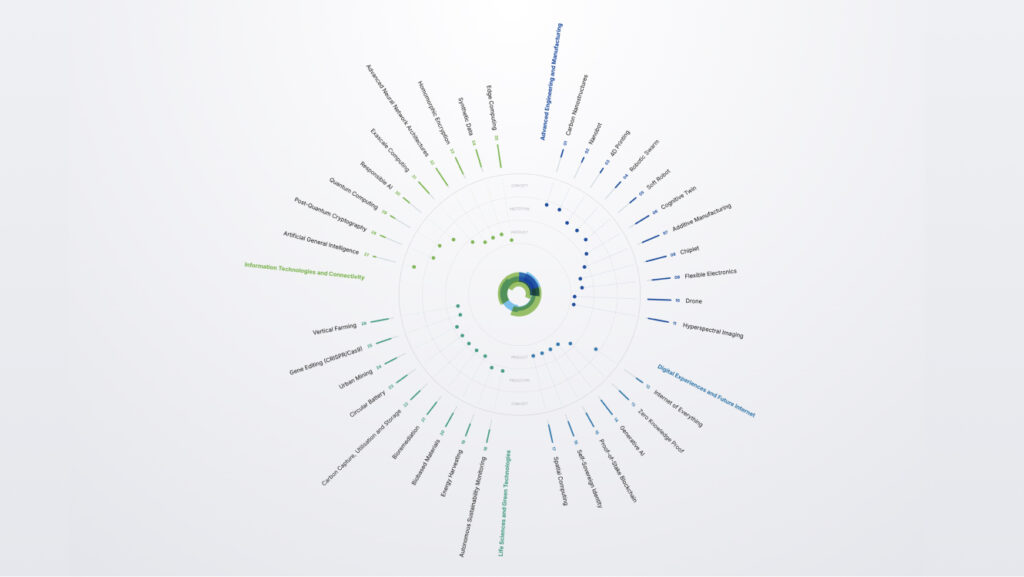Explore the latest deep tech trends with Tech Radar

The EIT Deep Tech Talent Initiative’s Tech Radar is a dynamic digital tool built around 35 technologies relevant to deep tech. It visualises emerging technologies and the organisations active in them, as well as available courses for learners on the EIT Deep Tech Talent platform.
The Tech Radar has been built in collaboration with Pledgers of the Initiative, ensuring its relevance to the community. It includes over 60 use cases that anchor those technologies into real world solutions to tackle some of society’s greatest challenges such as climate change.
Users will be able to:
- Students looking to develop careers in AI
- Enterprises wanting to know how AI might affect future business
- Training Providers looking to identify future skills gaps for course development
- Financial Partner/Institution interested in developing technology and investment
Tech Radar features
Once logged in, users will be able to:
- Discover skills gaps across deep tech fields
- Find training courses in deep tech topics
- Delve into examples of how deep tech knowledge can be applied
- Explore links between deep tech and Sustainable Development Goals
- Find EIT Deep Tech Talent Initiative Pledgers active in deep tech
All of which will help users assess how close to market reality the technologies are.
Research Process
The Tech Radar was created by Envisioning. Here is how they describe their process.
For this project, Envisioning used secondary sources only, with regular validation sessions with our client. For the solution scouting phase we first consult our vast technology database, select entries and approve it with our partners, based on their needs. We supplement that with selected documents from our client and trusted reports from corresponding and adjacent industries, along with general emerging technology reports. This helps us to validate our selection and avoid any blindspots and redundancies, which we verify using AI tools such as ChatGPT or Claude.
For each entry, we make sure to consult and include relevant and diverse sources that help us not only write and validate the content but also assign a TRL and other metrics. This includes sources from scholarly materials, media, news, and reports, as well as products, companies, use cases and other initiatives that are studying or developing the solution. Depending on the availability of these materials, it’s already possible to estimate a TRL. For instance, technologies in early development will have few scientific papers or mentions in sci-fi, while those with higher TRL might have product pages and use cases. By using search engines, exploring different keywords and AI tools like Perplexity AI, it is possible to find sources that help us make our entries more tangible. We use Grammarly and prompt engineering techniques for GPT to assist us in crafting the texts while maintaining consistency. We also use Midjourney to create our images.
